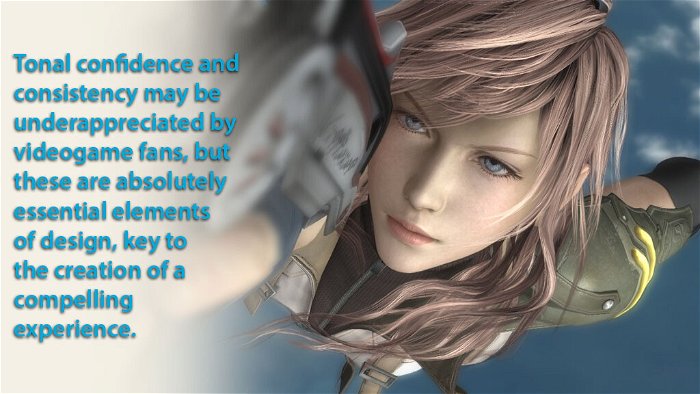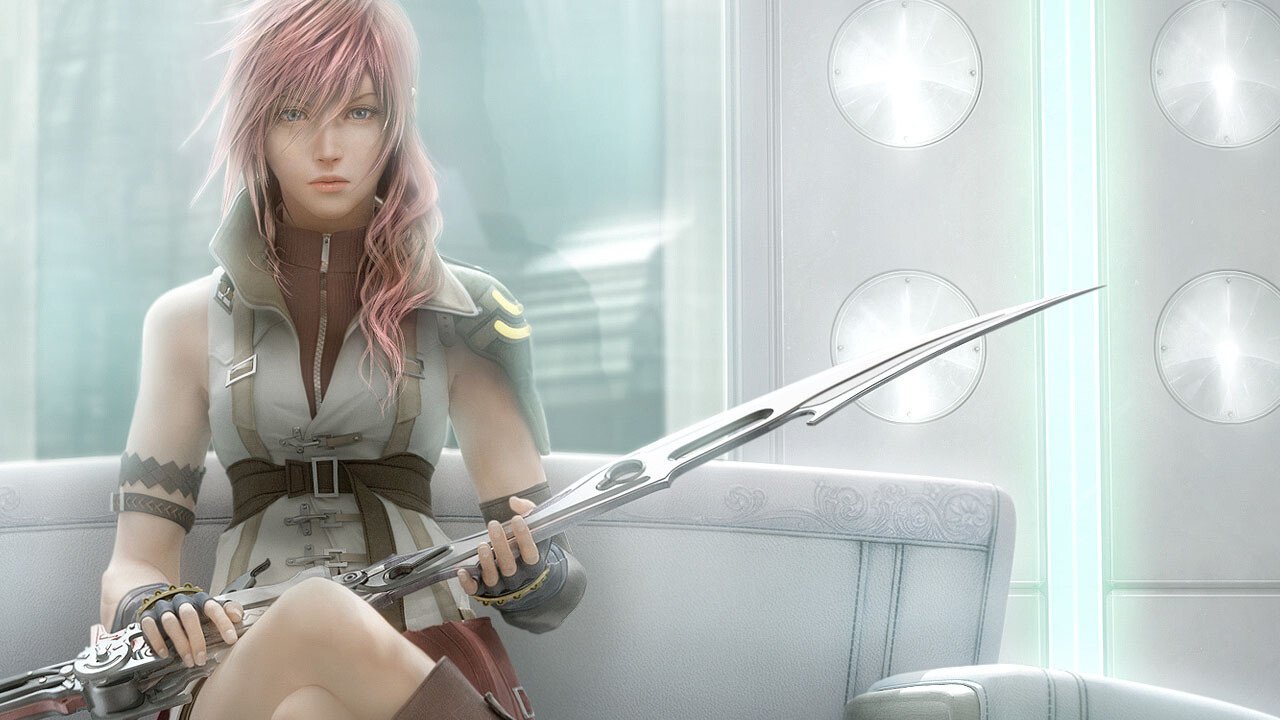I made it a total of twenty-one hours into Square Enix’s Final Fantasy XIII before I decided to give up, eject the disc, and move on with my life. Playing that far was difficult, not just for the reason that FFXIII is extremely slowly paced and not altogether engaging, but also because it’s by far one of the most uneven games I’ve ever played. By uneven I mean a number of different things—that the experience of playing the game can be enjoyable one moment and pretty dreadful the next, that the level of quality varies dramatically, and, most importantly, that the general design goals feel inconsistent.
Videogames, like all forms of creative expression, have to be developed by people who know what they’re setting out to make. A film that is unsure whether it wants to ruminate on the darkest aspects of humanity or offer up a feel-good romantic comedy will always result in something confusing. One that embraces its purpose and ensures that every aspect of its creation works to fulfill that goal will be better in almost every case. The same applies to videogames, which have to balance elements of design like visual art, narrative, and satisfying gameplay mechanics in order to appeal to an audience. A game that fails to unify all of these different aspects will seem unsatisfying or underwhelming.

Final Fantasy XIII shows just how easily a lack of strong direction can lead to an uneven end product. It’s a game that never seems quite sure what it wants to be and who it wants to appeal to. After multiple entries to the venerable role-playing series, Square Enix were seemingly attempting to make their most streamlined and “cinematic” Final Fantasy to date with XIII. Its opening hours consist primarily of lavish computer-generated cutscenes, navigating straightforward level paths, and engaging in simplified battles that slowly introduce every single combat mechanic with lengthy tutorials. This is rightly criticized as a poor method for investing players in the game’s world, but what is worse is that each element of FFXIII feels as if it were created by separate development teams with different visions of the game they were creating. The urgency established in cutscene exposition (the characters are all running from a government that wants to publicly execute them) gives way to slow-paced playable sections. In them all sense of immediate danger is replaced with repetitive fights against monsters and the exploration of environments that seem to have been plucked out of a hat and used at random. The world of Cocoon—a high-tech society powered by sentient crystals—is a grab bag of settings, reflecting FFXIII‘s scattershot nature. This applies to its narrative as well, the straight-faced (but deeply silly) plot meandering along at odds with a cartoon-y cast of anime archetypes that seem to have been created with nothing more than long-term fan appeal in mind. Basically, every different part of FFXIII—character and level design down to plot writing and battle system—seems to have been dreamed up by a collection of creatives unable to agree on what they were hoping to make.
Tonal confidence and consistency may be underappreciated by videogame fans, but these are absolutely essential elements of design, key to the creation of a compelling experience. There are so many moving parts in game development that it seems almost miraculous that not every game turns out as uneven as FFXIII. Even with a top-notch art director doing their best, a breakdown in communication between their department and, say, the animation team can lead to an unintended result. I can’t presume to be familiar enough with the inner workings of the typical videogame development studio to suggest a way to address this kind of problem. But I do think the fact that some of the most consistently designed videogames have been created by either small teams (Hotline Miami, Superbrothers: Sword & Sworcery EP, Fez) or under the guidance of confident game directors (Bioshock and Ken Levine or Metal Gear Solid and Hideo Kojima). An unwillingness to compromise—and having the leadership structure in place to fully execute on a good idea—seem necessary for an ambitious developer. A less focused development process seems like it can only lead to uneven games that fail to make the most of their concepts.




